- A fantastic all-rounder with Swedish character
- Great infotainment system - easy to use + bright colours
- Fun and well-damped driving experience
- Optional safety kit at this price
- Cabin isn't massively practical
- No shade for the optional glass roof
Unless you’re a Volvo enthusiast, it’s doubtful that you’d heard of the brand Polestar before. Created all the way back in 1996, Polestar started life as a racing team in the Swedish Touring Car Championship before developing performance versions of Volvo cars. In 2015, Volvo bought Polestar and by 2018, it had made its first standalone car. Fast forward four years and not only has Polestar launched its plan for domination of the EV market, but we’re finally getting to experience its first global standalone electric product: the Polestar 2. Does the 2022 Polestar 2 Long Range Dual Motor have what it takes to knock Tesla off the tech car sales perch? Let’s find out.
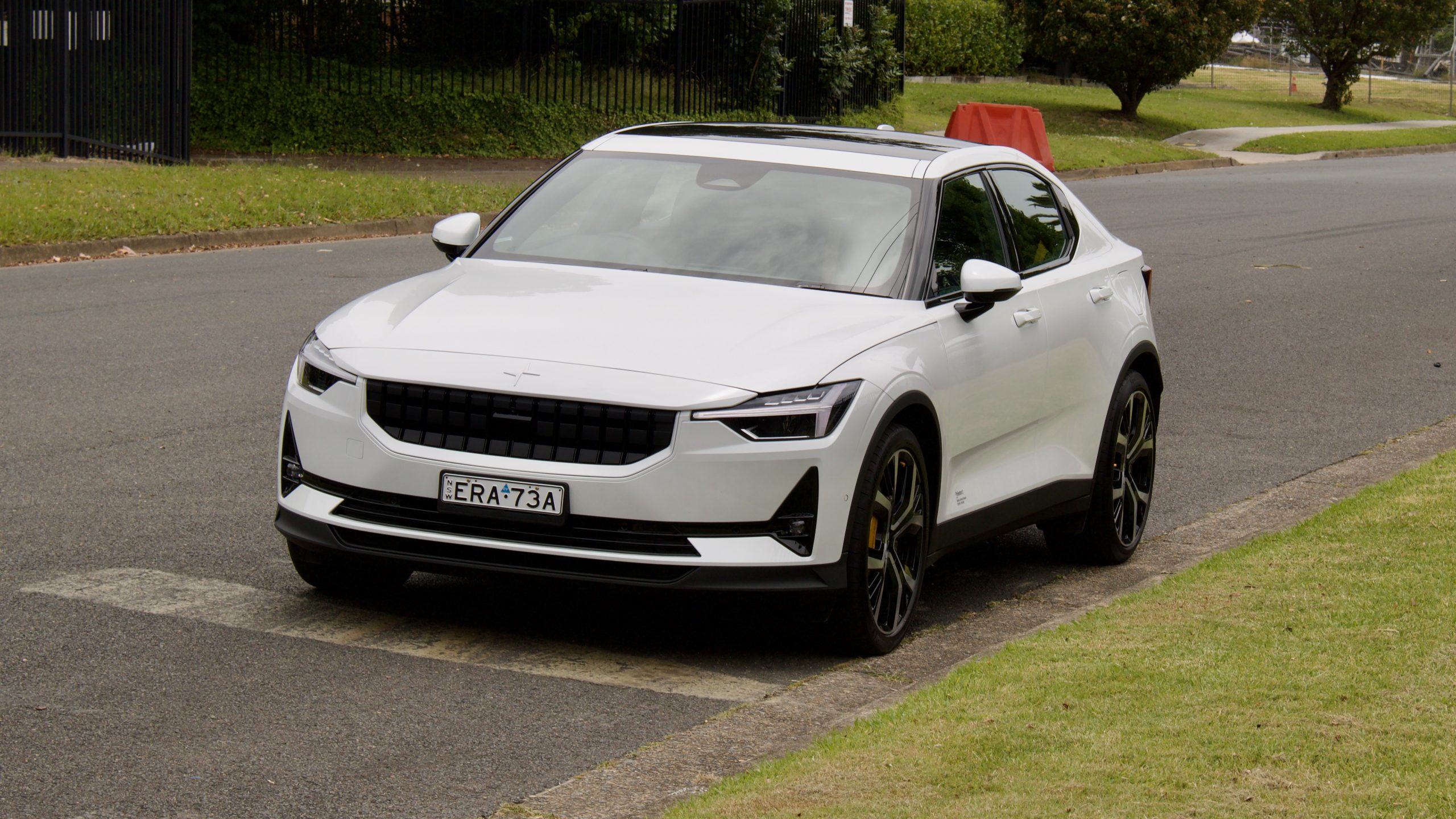
While Australia did not receive the Polestar 1 – a limited production super-expensive left-hand drive-only plug-in hybrid coupe based on the underpinnings of the Volvo XC90 – the Polestar 2 looks set to challenge the top-selling Tesla Model 3. The 2 is a mid-sized liftback with reasonable pricing, a range of up to 540km (WLTP) and enough shared parts with Volvo for lots of familiarity.
Price & Equipment: 7/10
For now, there are three 2022 Polestar 2 models in Australia: the entry-level Standard Range Single Motor, mid-spec Long Range Single Motor and the top-spec Long Range Dual Motor that we tested here. While the entry-level Standard Range starts at $63,900 plus on-road costs, the Long Range Dual Motor we tested here is priced at $73,400 plus on-road costs (around $77,000 drive away in New South Wales).




Standard equipment on the Polestar 2 range includes 19-inch alloy wheels, automatic all-LED lighting (including rear daytime running lights that are brighter in the day time), automatic wipers, heated and electric front seats with driver’s memory, dual-zone climate control with rear vents, keyless entry and start, an electric tailgate with kick-to-open functionality, heated/auto-folding mirrors which auto-dip in reverse, an 11.15-inch portrait touchscreen with Android Automotive software and over-the-air updates, an inbuilt SIM card with three years of connectivity, Google Maps navigation, digital radio, wired Apple CarPlay, a 12.3-inch digital driver’s display, a 250-watt eight-speaker sound system, four USB-C ports and cruise control with a speed limiter.
Safety equipment includes eight airbags, auto emergency braking and steering (AEB) with pedestrian and cyclist detection, auto high beam, lane keeping assistance, driver attention monitoring, road sign recognition, automatic post-collision braking, front and rear parking sensors and a reversing camera.




There are currently six exterior colour options for the Polestar 2 range. The only no-cost option is ‘Magnesium’ silver, while ‘Thunder’ grey, ‘Jupiter’ rose gold, ‘Midnight’ blue, ‘Space’ black and our test car’s ‘Snow’ white are $1,500 extra. Black or grey textile upholstery is standard on the inside.
There are three option packages for the 2022 Polestar 2 range: the $3,400 Pilot Lite Pack, which adds adaptive cruise control, blind-spot monitoring with rear-cross traffic alert, auto rear braking, a 360-degree camera, lane trace assist for level two semi-autonomous driving capability, auto-dimming exterior mirrors and front fog lights with cornering functionality. Considering Polestar’s Volvo-derived heritage and the 2’s pricing, we think this package should be standard equipment.


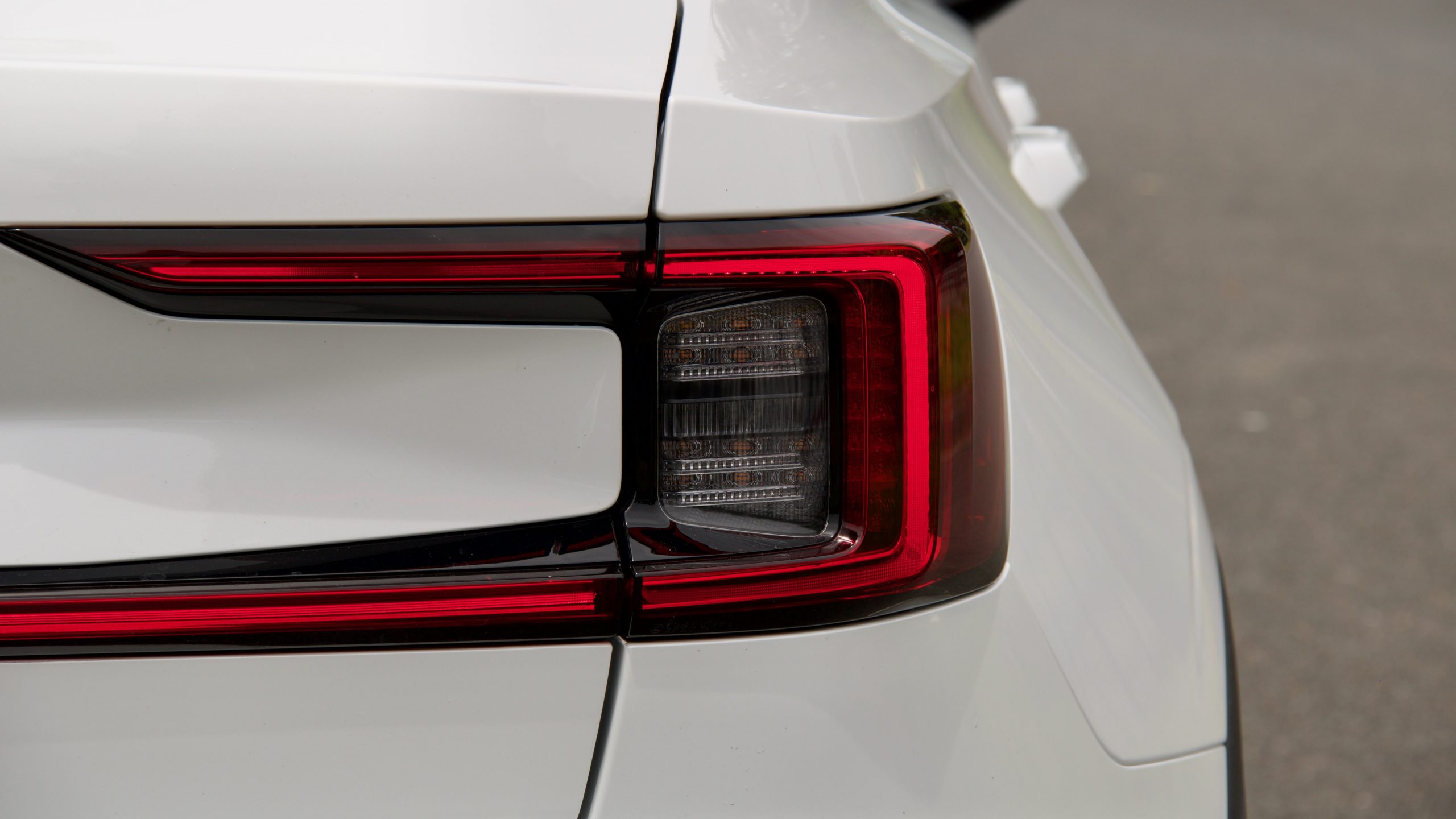

The $6,000 Plus Pack adds 14-way electrically adjustable front seats with driver’s memory, a 600-watt 13-speaker Harman Kardon sound system, a panoramic glass roof, a wireless phone charger, an air quality sensor, a heat pump, a heated steering wheel and rear seat, heated windshield wiper nozzles, ‘WeaveTech’ upholstery, ‘high level’ interior ambient lighting, a tinted rear window and a boot bag holder. Those who choose the Plus Pack also have access to $6,000-extra white Nappa leather upholstery, which also includes ventilated front seats.
There’s also the $8,000 Performance Pack, which adds larger 20-inch wheels, Brembo brakes, Öhlins manually-adjustable dampers and yellow detailing on the brakes, wheels and seatbelts. Our test car was fitted with everything bar the Nappa leather upholstery, and its retail price was around $103,000 drive away in New South Wales. That’s a serious amount of money, but it’s fully loaded for the price.
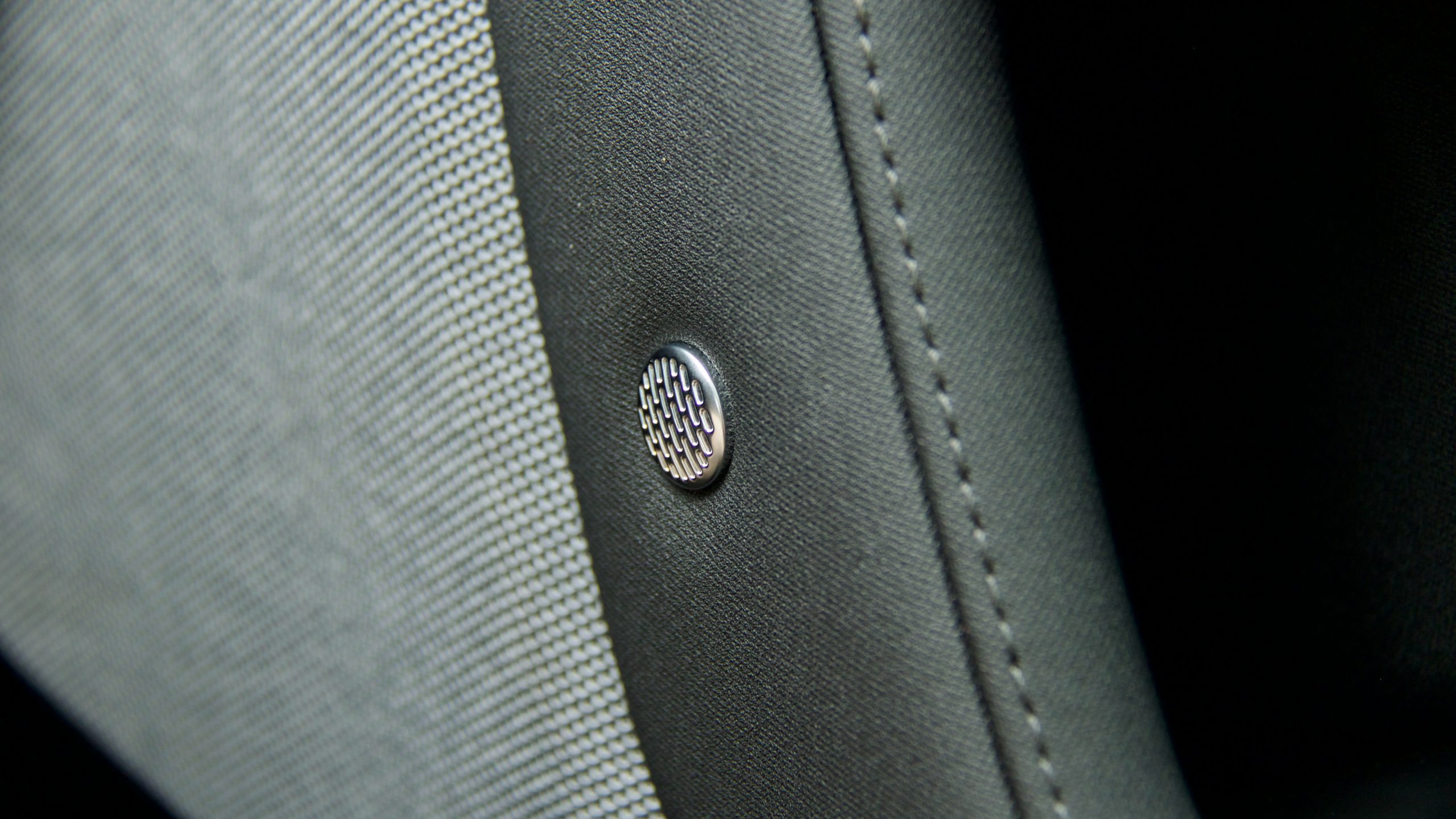
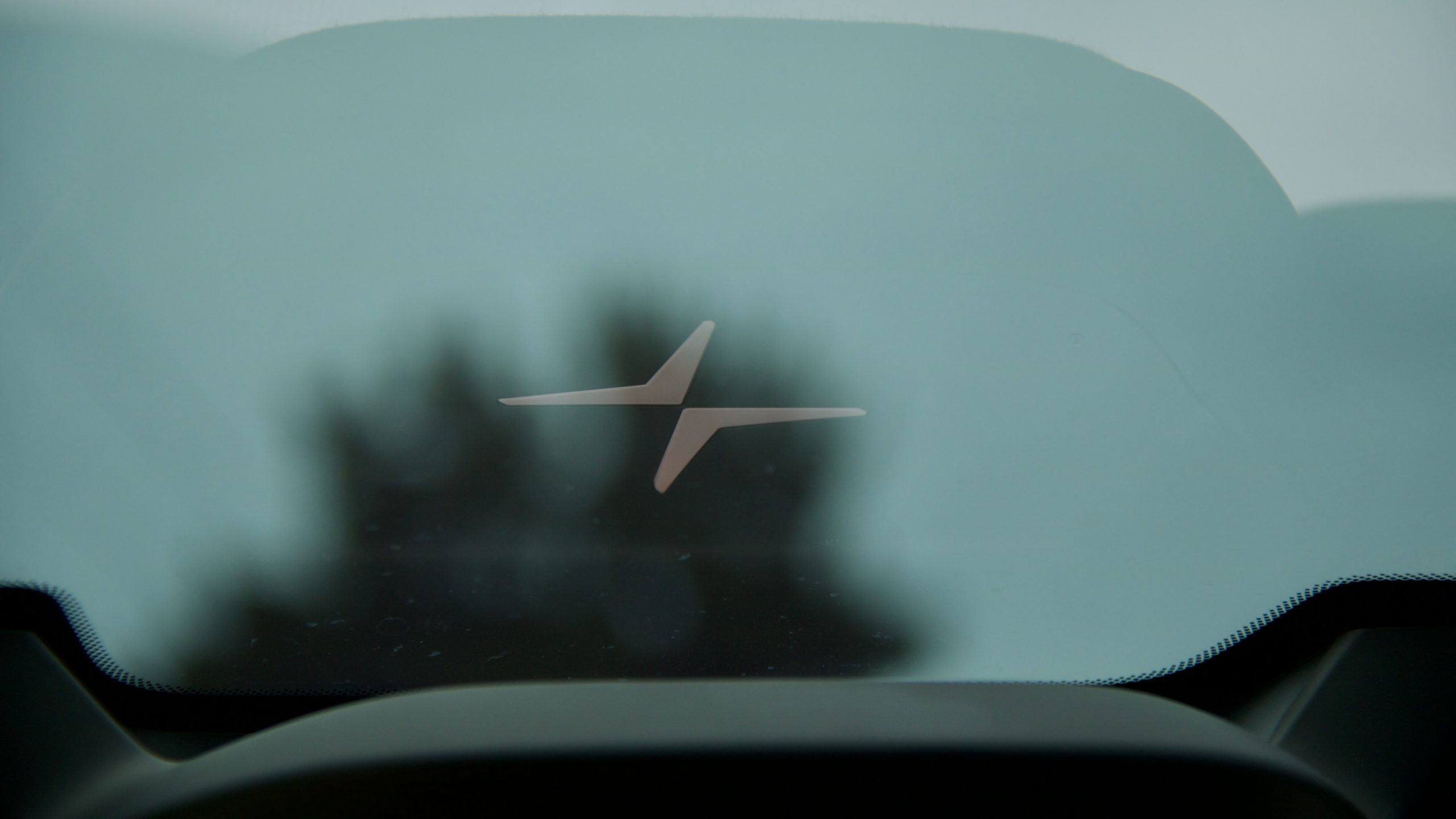


There are an increasing number of competitors to the Polestar 2 Long Range Dual Motor, the chief of which is the Tesla Model 3 Long Range (priced from $80,000 plus on-road costs but including the optional larger wheels and premium paint, it’s around $90,000 drive away, which is similar money to the Polestar 2 equipped without the Performance Package).
The 2 and Model 3 have similar kit: vegan-friendly upholstery, large centre infotainment systems with internet functionality, Google Maps navigation, level 2 automatic highway driving capability, premium multi-speaker sound systems and glass roofs. Equipped with the Pilot Lite Pack, the Polestar has more safety kit like blind-spot monitoring, rear cross-traffic alert, a 360-degree parking camera, automatic rear braking. It also has Apple CarPlay, which the Tesla still lacks.



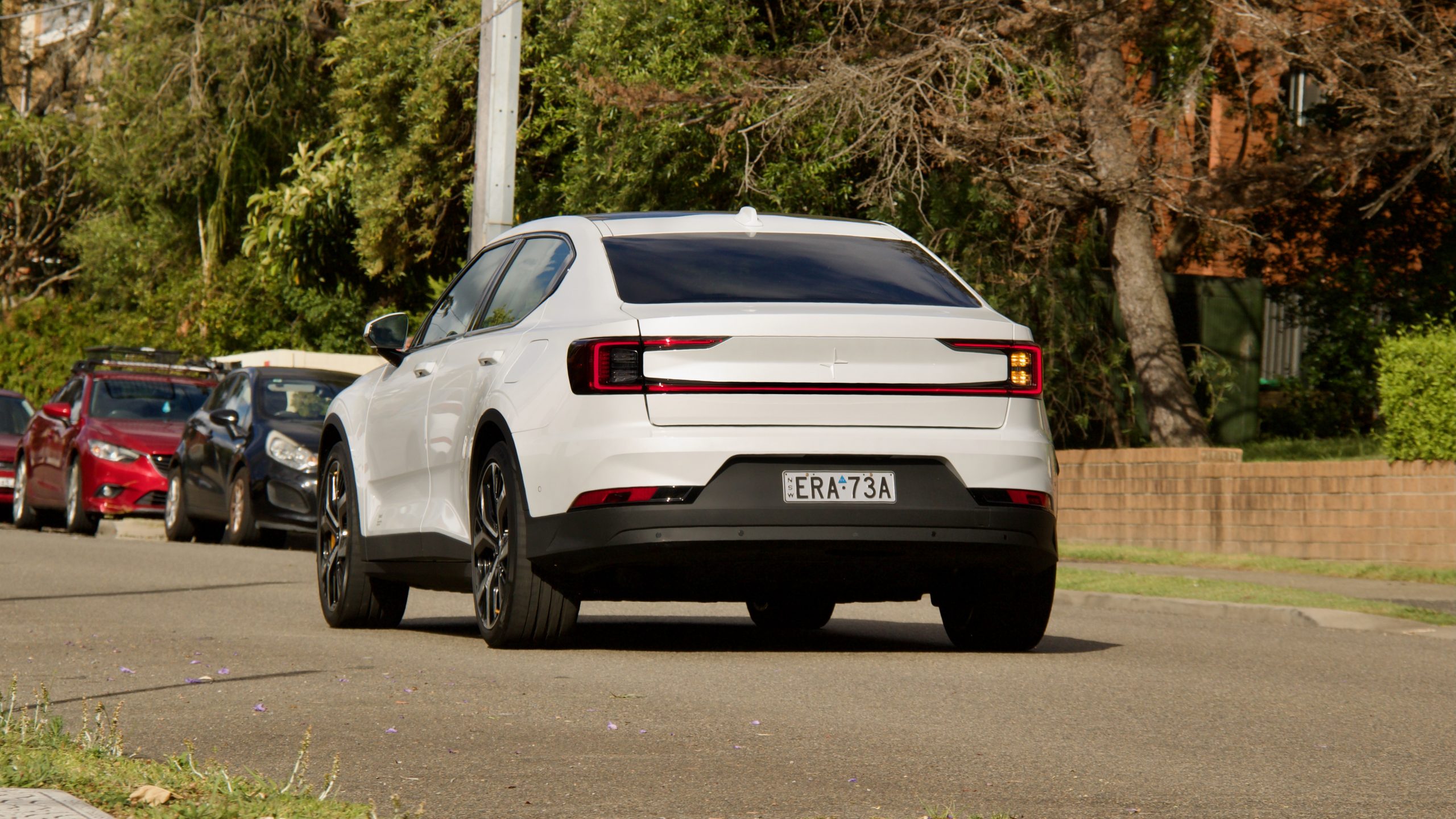
Other rivals to the Polestar 2 include the Volvo XC40 and C40 (both share a platform with the Polestar), Kia EV6, Tesla Model Y, Hyundai Ioniq 5 and Mercedes-Benz EQA, as well as both the BMW iX1 and Hyundai Ioniq 6, which are due to be released in the first half of 2023.
Performance & Range: 8/10
Under the body of the 2022 Polestar 2 Long Range Dual Motor is a 78kWh lithium-ion battery that feeds two electric motors. Combined outputs are a huge 300kW of power and 660Nm of torque, which gives the 2 a 0-100km/h sprint time of just 4.7 seconds and a 205km/h top speed – but from behind the wheel, it feels even faster with instant acceleration from zero. Like the XC40 that it shares a platform with, the Polestar 2 Long Range Dual Motor is all-wheel drive, with an electric motor on both axles, though the less expensive Single Motor variants are front-wheel drive.



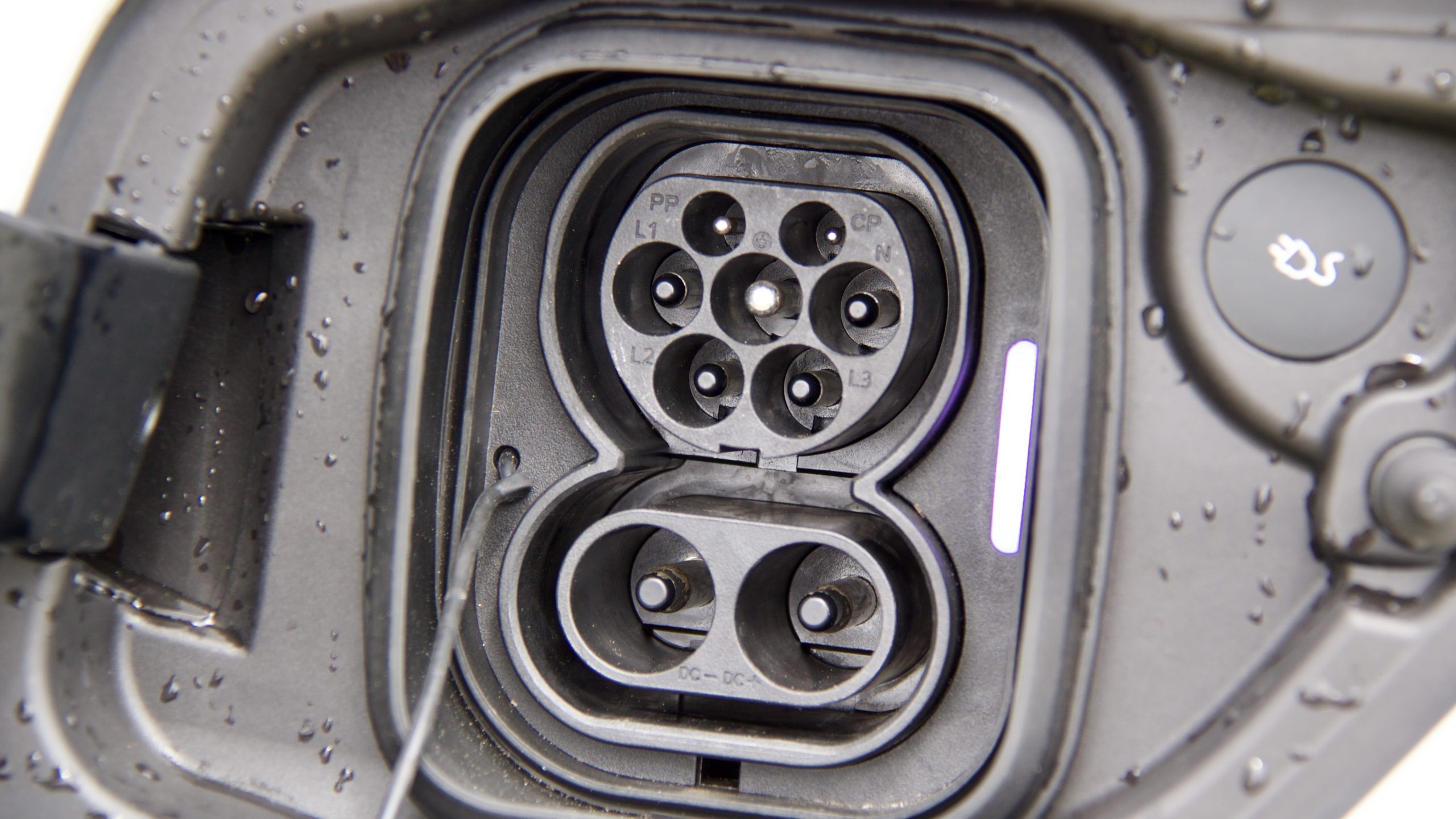
Charging the Polestar 2 Long Range Dual Motor from 0 to 80 per cent can be done in as little as 37 minutes using a 150kW DC charger. AC charging is supported up to 11kW, and at that charging rate, a full charge will take around eight hours.
According to the WLTP cycle, a claimed full charge in the Polestar 2 Long Range Dual Motor gives 480km of range, which is a full 120km less than the Model 3 Long Range – with a full charge, our test car was showing a full range of around 350km and that was based on our energy consumption of 22.3kWh/100km. Choosing the mid-spec Polestar 2 Long Range Single Motor increases the claimed WLTP range to 540km, and we’d consider that model for its range alone.




But regardless of the motor selected, the Polestar 2’s energy consumption is not great, and our testing has shown cars like the Kia EV6 to be consistently more efficient. The EV6 and Ioniq 5 are more convenient to charge as well, thanks to their higher charging rate at up to 350kW. However, the XC40 is getting updated in 2023 with higher rate 200kW charging, and we’d wager that will spread to the Polestar 2 at around the same time as well. The XC40 and C40 are also becoming rear-wheel drive in base model form for greater efficiency, which is another change we predict the 2 inheriting.
Ride & Handling: 9/10
Based on the same ‘CMA’ platform as the Volvo XC40 and its electric XC40 Recharge sibling, the Polestar 2 doesn’t use a bespoke electric-only vehicle platform like the incoming Polestar 3 does. That means it’s not as spacious as the Model 3, but the 2 still drives very well. As you’d expect for a Volvo-based product, the Polestar 2 is nimble, sharp, refined and entirely pleasurable to drive, though the EV6 offers a better ride quality balance than the Performance Pack Polestar we tested.



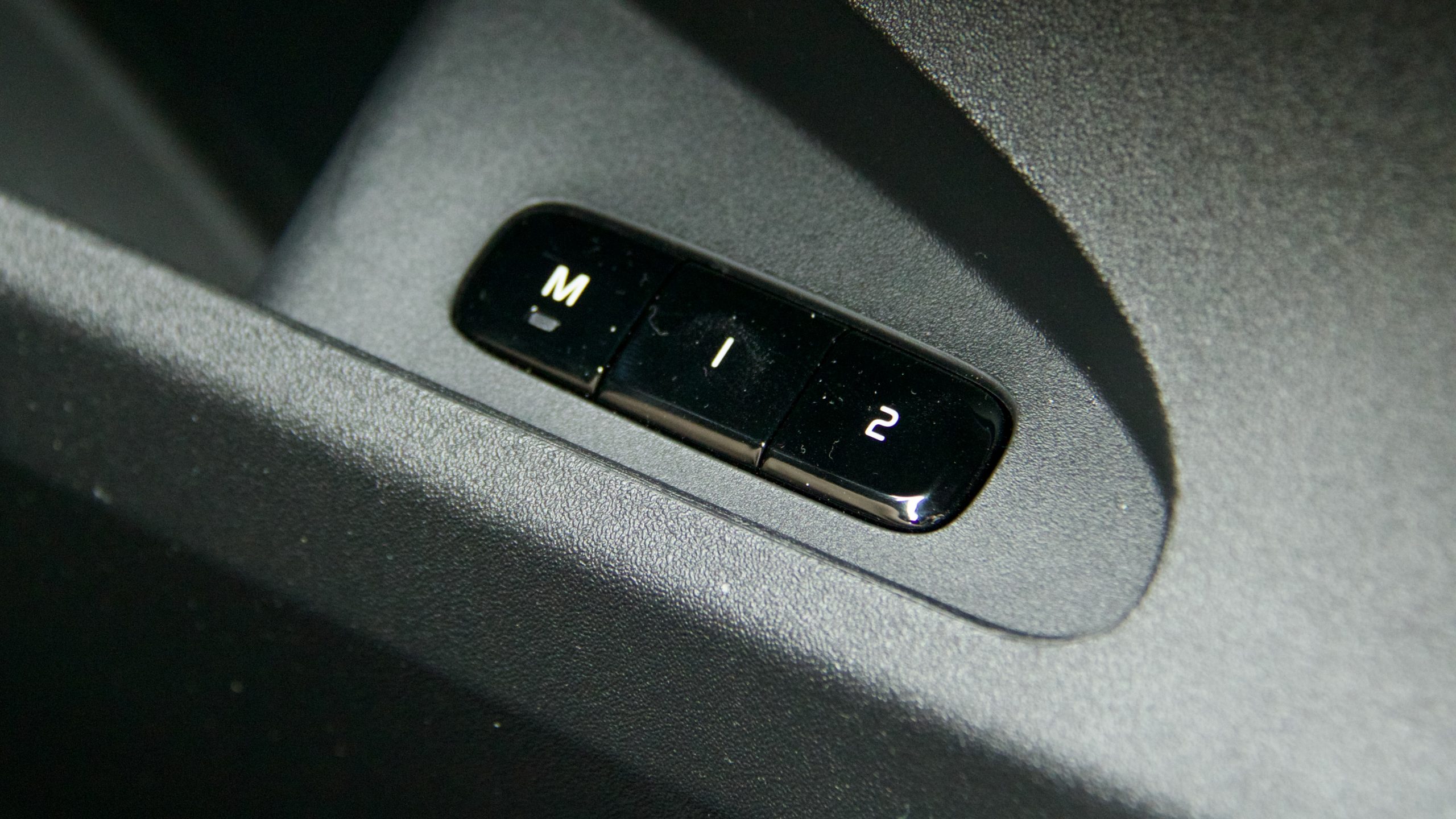
Our test car was fitted with the $8,000-optional Performance Package, which adds larger 20-inch wheels, Brembo brakes, Öhlins manually-adjustable dampers and yellow details on the brakes, wheels and seatbelts. While we’ve not yet driven a 2 without this package fitted, previous experience in the related XC40 tells us that it’s likely to drive quite well without this package fitted. With the package fitted, it corners tenaciously and the Brembo brakes are powerful. But would we get the pack? Probably not as it makes the ride quality quite firm – certainly firmer than you’d expect for a car like this.
Our test car was also fitted with the optional Pilot Pack, which is a necessary option to tick in our opinion because it adds a lot of important safety equipment like adaptive cruise control, blind-spot monitoring and lane trace assist for semi-autonomous highway driving capability. Also importantly, these safety systems all work really well, as you’d expect for a company that’s related to Volvo. They’re also not intrusive and it’s quite easy to change their settings in the infotainment system.
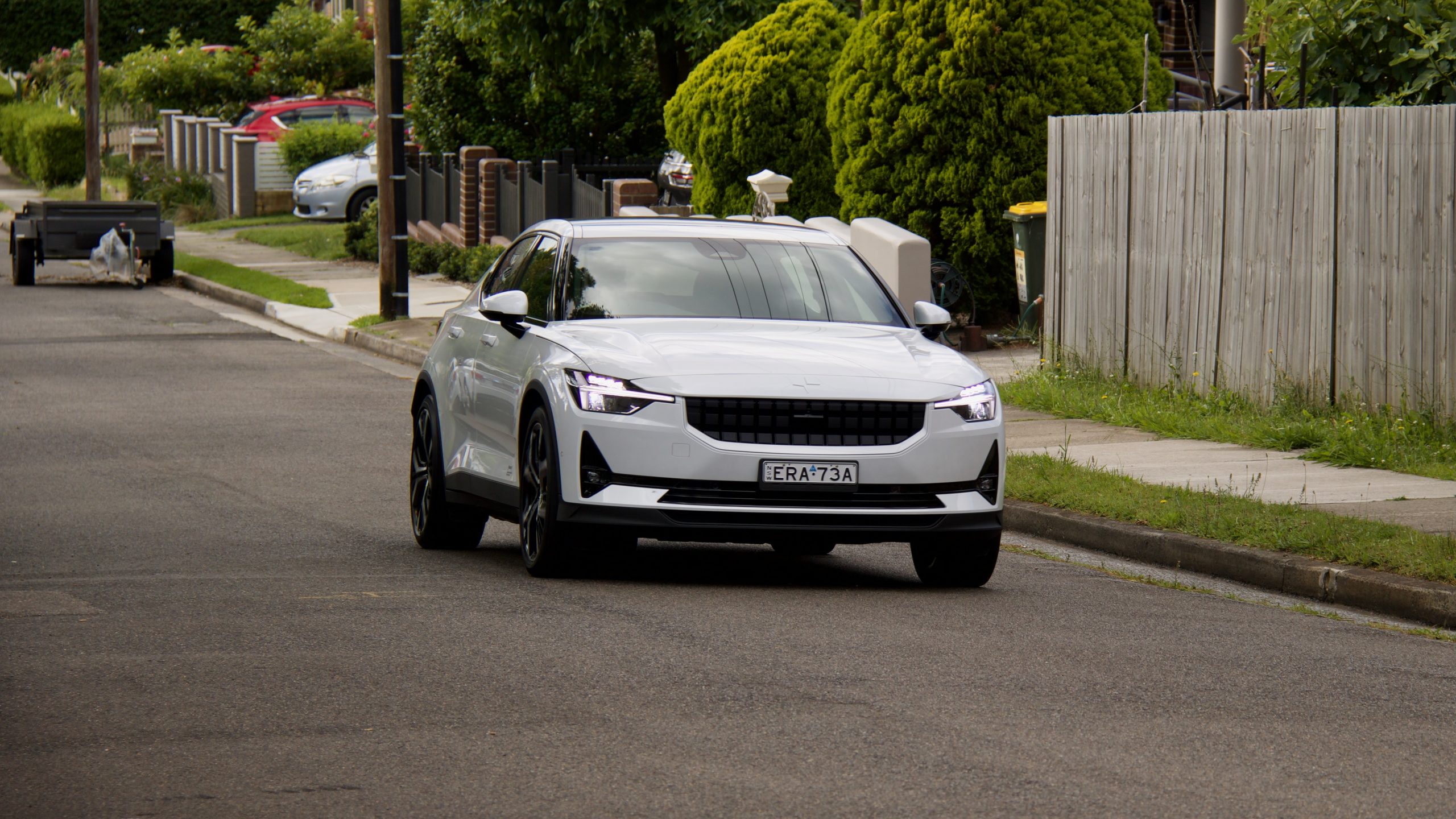



One annoying part of our test car, however, was the panoramic glass roof. This is part of the Plus Pack, and livens up the cabin ambience a lot – but disappointingly for hot countries like Australia, there’s no cover or blind for it. While the glass filters out almost all UV light, it means that like the Model 3, there’s no cover from the sun and it gets quite hot. This means you’re pumping the AC more than you need to, which reduces range – if we were buying a 2 with this pack, we’d get the roof tinted very quickly.
Interior & Practicality: 9/10
The interior of the 2022 Polestar 2 is not the most practical cabin on the market, but it’s well designed, finished to a high standard, filled with high quality and useful technology and the result is a refreshingly minimalist cabin that is thoroughly Swedish. There are many Volvo parts used – the stalks, buttons and other switchgear – but these only add to the high quality feel inside the Polestar.

Importantly too, the Polestar’s cabin quality is richer than the Model 3’s, with greater depth to the materials and tighter shut lines – plus, unless you choose the optional Nappa leather, it’s entirely animal free. Having said that, it’s quite a dark cabin, with very sombre colours used throughout – we wish more colour options were available inside it.
Centre of the Polestar 2’s cabin is a portrait 11.15-inch touchscreen that runs Google’s Android Automotive infotainment system. The screen quality is great, it’s very bright and easy to use and it’s also a well featured system with Google Maps navigation, Google Assistant voice control, the Google Play Store for apps like Spotify, digital radio and wired Apple CarPlay integration. The Harman Kardon sound system – part of the Plus Pack – is excellent too, with a rich and classy sound. Dare we say it, the Polestar infotainment system is superior to Volvo’s already great system, thanks to its more modern layout.




If there’s a downside to the Polestar 2’s cabin, it’s that it’s not that practical. Because of that, there isn’t a whole lot of storage space at the front of the cabin – reasonably-sized door bins and a big glovebox are highlights. The box underneath the centre arm rest (which hides one of the two front cup holders) is small, while the large centre console takes up a lot of space as well. A Model 3 has a lot more spaces for storage.
The back seat of the Polestar 2 is very comfortable, with supportive seats and reasonable room, though the Model 3 is definitely more spacious thanks to its bespoke EV platform. Six-footers will be more than comfortable, with reasonable legroom and despite the panoramic roof, acceptable headroom. There are two ISOFIX points for child seats, though the door opening isn’t huge. The Polestar’s rear cabin features air vents, map pockets, a centre arm rest with cup holders, a ski port, two USB-C charging ports, reasonable door pockets and with the Plus Pack option ticked, heated outboard seats.




The boot of the 2022 Polestar 2 measures 405-litres with the rear seats up – just 20L less than the Model 3, but it’s more accessible than the Tesla’s thanks to the Polestar’s hatchback body. That space extends to 1,095L with the rear seats folded, and that’s including 41L that lies underneath the boot floor. There’s also 41L of space under the bonnet. The boot itself is very well finished, it has multiple hooks and side storage for extra storage. If you choose the Plus Pack, there is also a clever lift up divider to hold fragile items in. Like most other electric cars in Australia, there’s no spare wheel unfortunately.
Service & Warranty: 9.5/10
All new Polestar models in Australia come with a five-year/unlimited km warranty with five years of roadside assistance, an eight-year/160,000km battery warranty and even five years of servicing included through the Volvo dealer network. In the premium space, it doesn’t get better than Polestar’s warranty package.

Competitors such as the Model 3 features a lesser four-year/80,000km warranty with drivetrain coverage up to eight years/192,000km. Tesla doesn’t quote service pricing either. The XC40 and C40 twins have the same warranty package, though you only get three years of included servicing with them. The Kia EV6 has a longer seven-year/unlimited km warranty (with the same battery warranty) but five years/75,000km of servicing costs $1,089 ($218 per service).
The 2022 Polestar 2 Long Range Dual Motor DiscoverAuto Rating: 8.5/10
As we expected, the 2022 Polestar 2 Long Range Dual Motor is an entirely pleasant car that deserves big sales success in Australia. It’s a great all-rounder with reasonable pricing, great performance, a very good driving experience, an expansive list of standard equipment, intuitive technology and enough familiarity to Australian new car buyers thanks to its links to Volvo – just look at it and you’ll know what we mean. It’s so familiar, in fact, that we think it could easily be sold here as a Volvo E40.

It’s not perfect, however. The range and charging speeds are not spectacular – a cheaper Kia EV6 offers better efficiency and higher charging rates – while the interior practicality isn’t great either. We also think that the optional Pilot Lite Package should be standard equipment (even if pricing is made higher to match) because it features equipment like blind-spot monitoring that should be standard for this price. But get past those issues and the Polestar 2 is an entirely pleasant, well-rounded and excellent quality package that offers some better aspects than the Tesla Model 3. Based on this first taste, we’re very excited for Polestar’s future – we think that it’s going to be as bright as the North Pole star logo itself.

Leave a Reply